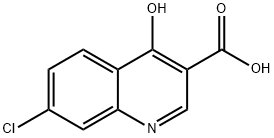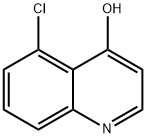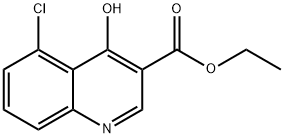2-Methylpyrrolidine
- CAS NO.:765-38-8
- Empirical Formula: C5H11N
- Molecular Weight: 85.15
- MDL number: MFCD00014491
- EINECS: 212-144-3
- SAFETY DATA SHEET (SDS)
- Update Date: 2024-12-18 14:15:32

What is 2-Methylpyrrolidine?
Chemical properties
clear colorless to light yellow liquid
The Uses of 2-Methylpyrrolidine
2-Methylpyrrolidine can be used to produce?2-(2-methylpyrrolidinyl)benzaldehyde?at the temperature of?152°C. It is commonly used as organic reagent.
Definition
ChEBI: 2-methylpyrrolidine is a member of the class of pyrrolidines that is pyrrolidine which is substituted by a methyl group at position 2. It has a role as a plant metabolite.
What are the applications of Application
2-Methylpyrrolidine is an inhibitor of cyclooxygenase-2 (COX-2) and a key component in the preparation of other organic intermediates. 2-Methylpyrrolidine may be used as a guest molecule for the synthesis of nonasil-[4158], a clatharate compound.
General Description
2-Methylpyrrolidine is a substituted pyrrolidine. It is one of the major bioactive compounds found in Teucrium manghuaense. The hydrodenitrogenation of 2-methylpyrrolidine in the presence of sulfided NiMo/γ-Al2O3 catalyst has been studied.
Properties of 2-Methylpyrrolidine
| Melting point: | -96.37°C (estimate) |
| Boiling point: | 97-99 °C/744 mmHg (lit.) |
| Density | 0.834 g/mL at 25 °C (lit.) |
| refractive index | n |
| Flash point: | 37 °F |
| storage temp. | Keep in dark place,Inert atmosphere,Store in freezer, under -20°C |
| form | Liquid |
| pka | 10.93±0.10(Predicted) |
| color | Clear colorless to light yellow |
| Water Solubility | soluble |
| CAS DataBase Reference | 765-38-8(CAS DataBase Reference) |
| NIST Chemistry Reference | 2-Methylpyrrolidine(765-38-8) |
| EPA Substance Registry System | Pyrrolidine, 2-methyl- (765-38-8) |
Safety information for 2-Methylpyrrolidine
| Signal word | Danger |
| Pictogram(s) |
 Flame Flammables GHS02  Corrosion Corrosives GHS05  Exclamation Mark Irritant GHS07 |
| GHS Hazard Statements |
H225:Flammable liquids H302:Acute toxicity,oral H314:Skin corrosion/irritation |
| Precautionary Statement Codes |
P210:Keep away from heat/sparks/open flames/hot surfaces. — No smoking. P233:Keep container tightly closed. P280:Wear protective gloves/protective clothing/eye protection/face protection. P301+P312:IF SWALLOWED: call a POISON CENTER or doctor/physician IF you feel unwell. P303+P361+P353:IF ON SKIN (or hair): Remove/Take off Immediately all contaminated clothing. Rinse SKIN with water/shower. P305+P351+P338:IF IN EYES: Rinse cautiously with water for several minutes. Remove contact lenses, if present and easy to do. Continuerinsing. |
Computed Descriptors for 2-Methylpyrrolidine
2-Methylpyrrolidine manufacturer
BASR Fine Chemicals Pvt. Ltd.
New Products
Tert-butyl bis(2-chloroethyl)carbamate (S)-3-Aminobutanenitrile hydrochloride N-Boc-D-alaninol N-BOC-D/L-ALANINOL N-octanoyl benzotriazole 4-Hydrazinobenzoic acid 3,4-Dibenzyloxybenzaldehyde 3-Nitrobenzaldehyde 1,1’-CARBONYLDIIMIDAZOLE R-2-BENZYLOXY PROPIONIC ACID 1,1’-CARBONYLDI (1,2-4 TRIAZOLE) 4-HYDROXY BENZYL ALCOHOL 3-NITRO-2-METHYL ANILINE (2-Hydroxyphenyl)acetonitrile 5-BROMO-2CYANO PYRIDINE 5,6-Dimethoxyindanone 5-broMo-2-chloro-N-cyclopentylpyriMidin-4-aMine 2-(Cyanocyclohexyl)acetic acid 4-methoxy-3,5-dinitropyridine 2-aminopropyl benzoate hydrochloride 1-(4-(aminomethyl)benzyl)urea hydrochloride tert-butyl 4- (ureidomethyl)benzylcarbamate diethyl 2-(2-((tertbutoxycarbonyl)amino) ethyl)malonate Ethyl-2-chloro((4-methoxyphenyl)hydrazono)acetateRelated products of tetrahydrofuran





![Ethanol, 2-[ethyl[4-(4-quinolinylamino)pentyl]amino]-](https://img.chemicalbook.in/CAS/20200611/GIF/478784-66-6.gif)

![5-[ethyl(2-hydroxyethyl)amino]pentan-2-one](https://img.chemicalbook.in/CAS/GIF/74509-79-8.gif)
You may like
-
 765-38-8 2-Methyl pyrrolidine 98%View Details
765-38-8 2-Methyl pyrrolidine 98%View Details
765-38-8 -
 2-Methylpyrrolidine CAS 765-38-8View Details
2-Methylpyrrolidine CAS 765-38-8View Details
765-38-8 -
 55441-95-7 99%View Details
55441-95-7 99%View Details
55441-95-7 -
 N-Vinylformamide 99%View Details
N-Vinylformamide 99%View Details
13162-05-5 -
 Chloro Uracil 1820-81-1 99%View Details
Chloro Uracil 1820-81-1 99%View Details
1820-81-1 -
 2-ethyl-6-methyl-3-hydroxypyridine succinate 99%View Details
2-ethyl-6-methyl-3-hydroxypyridine succinate 99%View Details
127464-43-1 -
 2-ETHYLPYRIDINE 100-71-0 99%View Details
2-ETHYLPYRIDINE 100-71-0 99%View Details
100-71-0 -
 181228-33-1 (S)-Methyl 3-amino-2-((tert-butoxycarbonyl)amino)propanote Hydrochloride (DAP-OMe. HCl) 99%View Details
181228-33-1 (S)-Methyl 3-amino-2-((tert-butoxycarbonyl)amino)propanote Hydrochloride (DAP-OMe. HCl) 99%View Details
181228-33-1